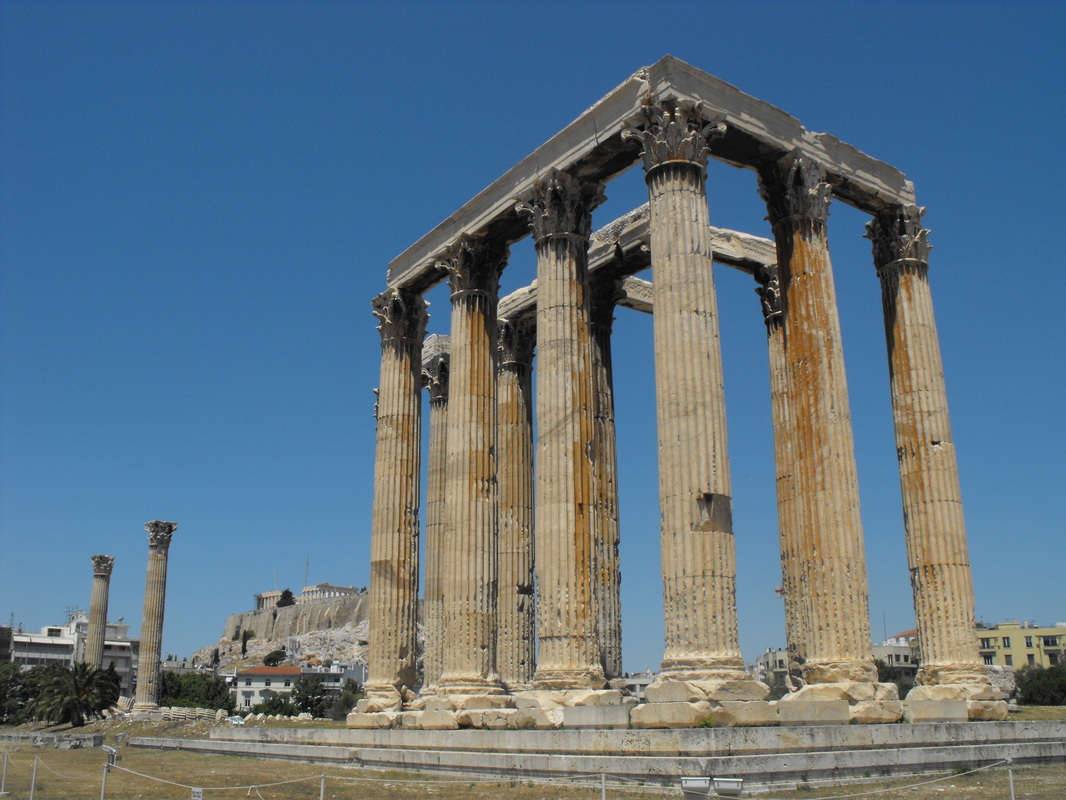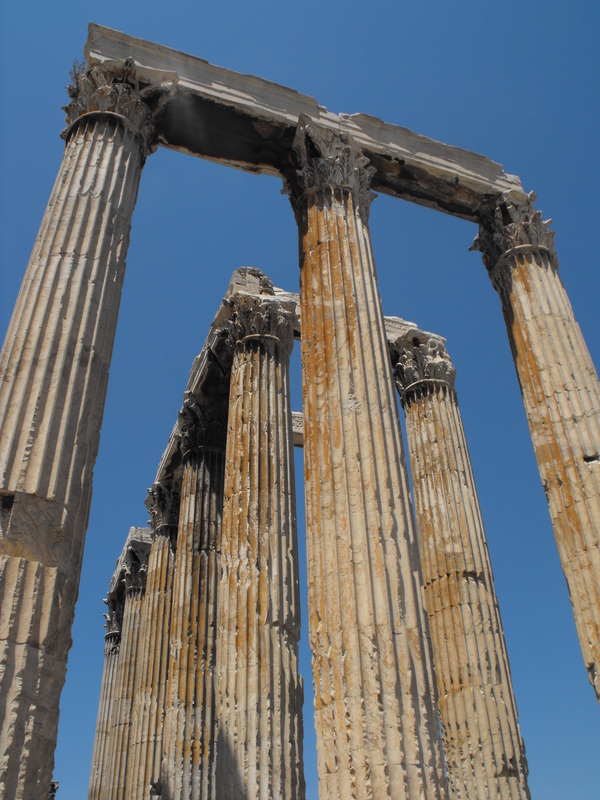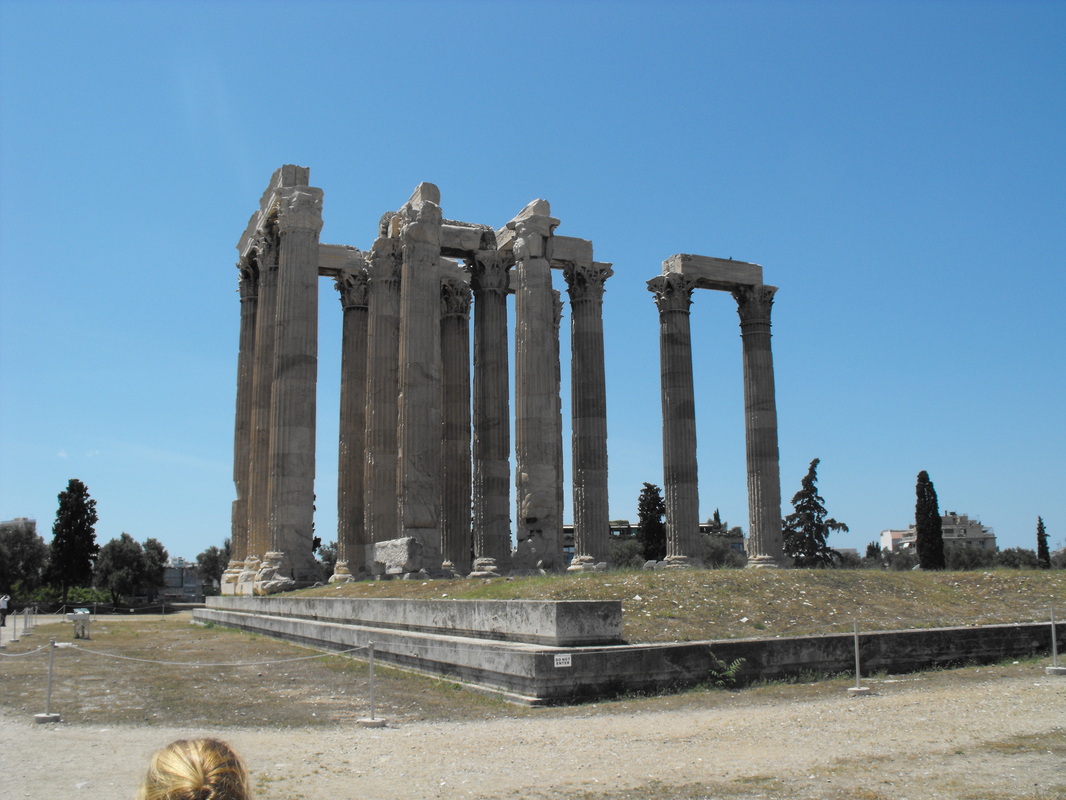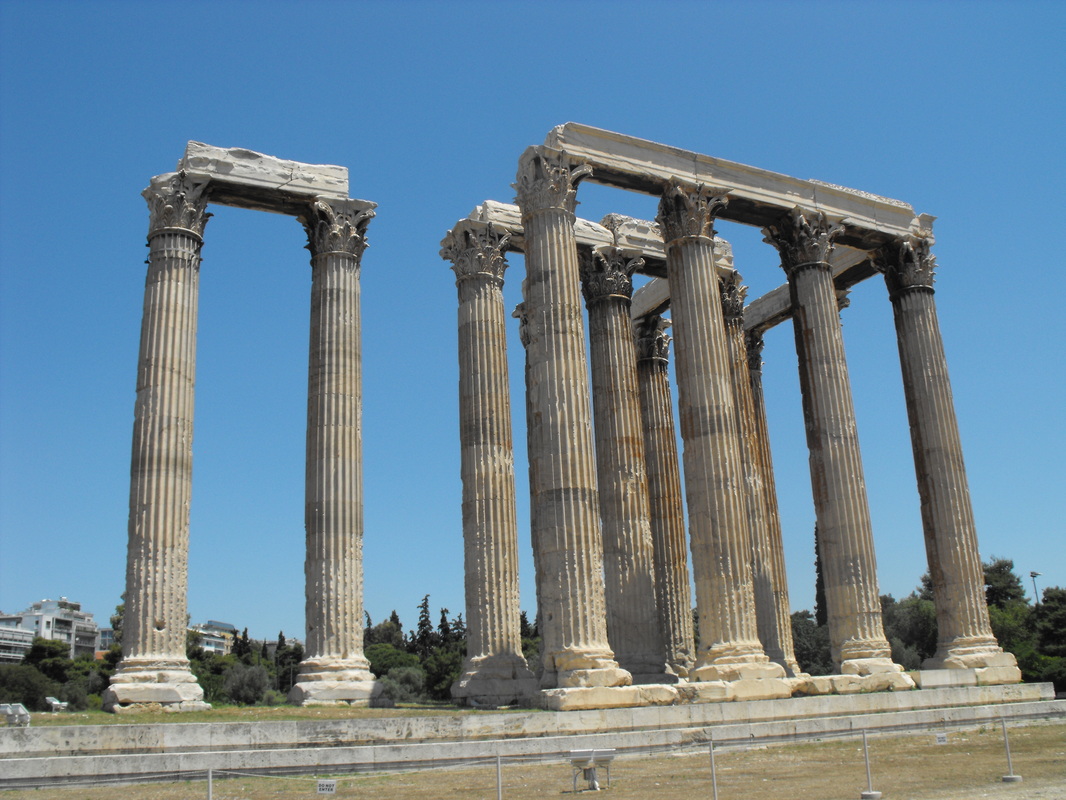2012 was the Temple of Zeus.
This is adjacent to the Arch of Hadrian (which is the subject of another one of my blogs) and is a colossal ruined temple located South-East of the Acropolis and about 700m South of the centre of Athens, it was dedicated to Zeus who was the King of the Olympian Gods.
An earlier temple once stood on this site which was constructed by the tyrant Pisistratus around 550BC, this building was demolished by his sons Hippias and Hipparchos after his death and construction started in about 520BC on the new temple which sought to surpass other famous temples in existence at that time.
The work was abandoned in 510 BC when Hippias was overthrown leaving only the platform and some column elements completed, the temple remained in this state for over 330 years.
It was not until 174 BC that the project was revived by Antiochus IV Epiphanes who placed the Roman Architect Decuimus Cossutius in charge. Decuimus changed the design to have three rows of eight columns across the front and back of the temple with a double row of twenty on the flanks. The columns
would be 17m high and be 2m in diameter, the building material also changed to
Pentelic marble. Unfortunately the project ground to a halt again in 164 BC with
the death of Antiochus leaving the temple half complete.
Serious damage was inflicted on the partly built temple in 86 BC by the Roman General and Statesman Lucius Cornelius Sulla (138 BC- 78 BC) during the First Mithridatic War. Sulla lay siege to the city throwing up enormous siege works that isolated Athens from its port and from the surrounding countryside, eventually undermining and bringing down a large section of the city wall he attacked and sacked the city. Sulla also seized some of the incomplete columns and transported them back to Rome where they were re-used in the Temple of Jupiter.
Another attempt was made to complete the temple during reign of the Roman Emperor Augustus but it was not until the accession of Hadrian in the 2nd century AD that the project was finally completed over 600 years after it had begun.
During Hadrian's reign a building programme was undertaken that included the completion of the Temple and the surrounding area. A walled marble-paved precinct was constructed around the temple which was adorned with numerous statues depicting Hadrian, the gods and personifications of Roman provinces. A colossal statue of Hadrian was also erected behind the temple by the people of Athens in honour of the Emperor. Within the cella a colossal statue of Zeus was also erected.
During the Roman period it was renowned as the largest temple in Greece and housed one of the largest cult statues in the ancient world.
after being pillaged and again badly damaged during a barbarian invasion in AD
267 when a Germanic people called the Heruli easily captured the city despite
the walls being rebuilt and extended to counter such a threat.
The temple following the invasion may never have been fully repaired. If the temple had still been in use in whole or in part it would have certainly closed down in AD 425 by the Christian Emperor Theodosius II when he prohibited the worship of the old Roman and Greek gods. Material from the building was in the 5th or 6th Century incorporated into a basilica constructed nearby.
In the centuries after the fall of the Roman Empire the temple was extensively quarried for building materials to supply building projects elsewhere in the city
and by the end of the Byzantine period had almost been completely destroyed.
It is still however an imposing sight and well worth a visit.
Photographed 6 June 2012





 RSS Feed
RSS Feed
